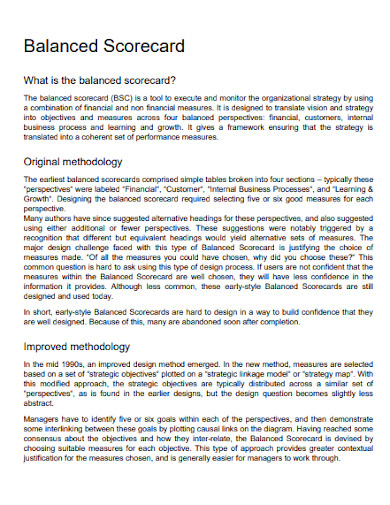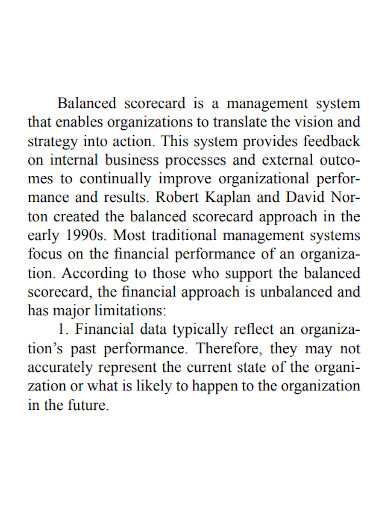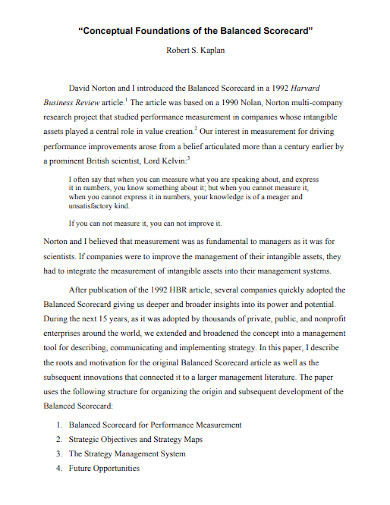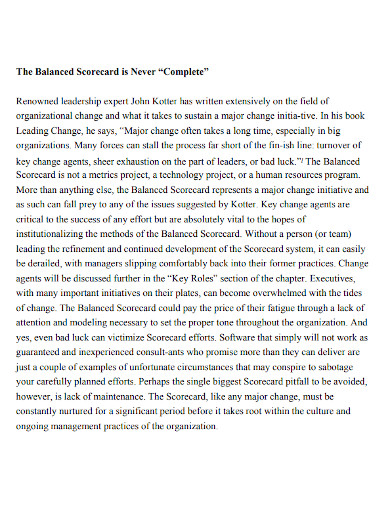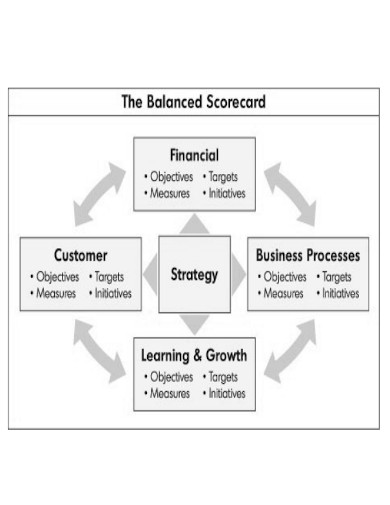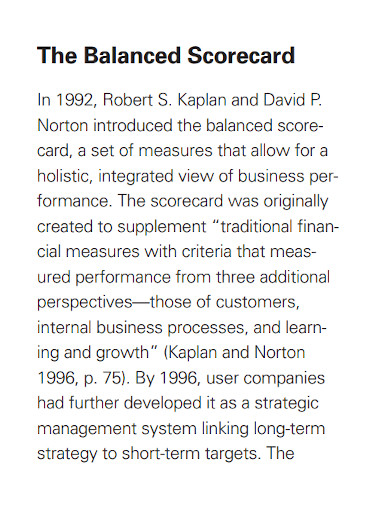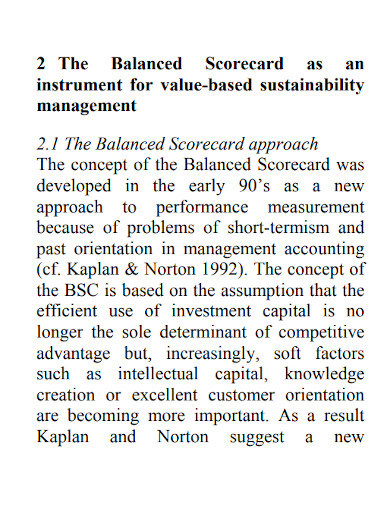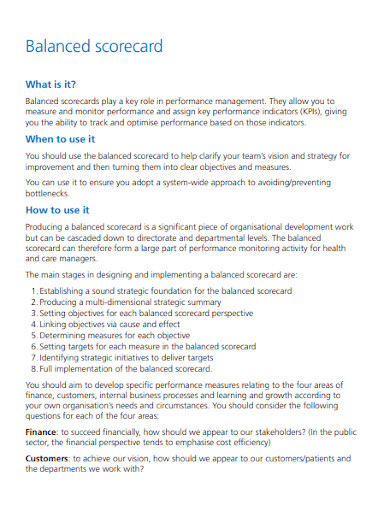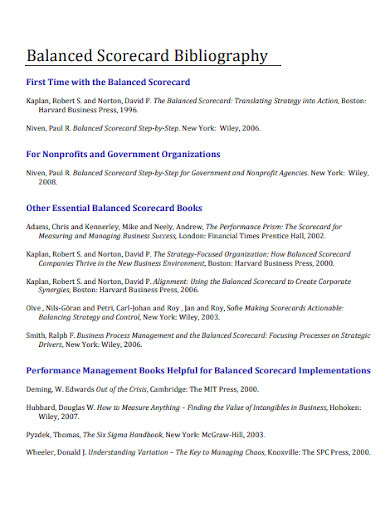What you estimate is exactly what you will get. Senior executives recognize that their organization’s measuring system has a significant impact on the conduct of managers and employees. Executives also recognize that standard finance accounting measurements such as return on investment and earnings-per-share can provide false signals for activities such as continual improvement and innovation, which are required in today’s competitive climate. Traditional financial performance indicators served well throughout the industrial period, but they are no longer relevant to the skills and competences that businesses are attempting to master today.
10+ Balanced Scorecard Samples
The balanced scorecard is a management approach that aims to translate an organization ’s objectives into a variety of management performance targets that are then measured, monitored, and adjusted as needed to guarantee that the strategic goals are accomplished. The balanced scorecard technique is based on the idea that typical financial accounting indicators for monitoring strategic goals are crucial for keeping firms on track. Financial numbers reveal what has happened in the past, not where the company is or should be going.
1. Balanced Scorecard Template
2. Balanced Scorecard Management
3. Standard Balanced Scorecard
4. Conceptual Foundations of the Balanced Scorecard
5. Maintaining the Balanced Scorecard
6. Balanced Scorecard in PDF
7. Basic Balanced Scorecard
8. Printable Balanced Scorecard
9. Formal Balanced Scorecard
10. Balanced Scorecard Bibliography
11. Balanced Scorecard Framework
Perspectives of a Balanced Scorecard
A balanced scorecard concentrates on the following major areas:
Financial perspective
A company’s financial goal is to ensure that it generates a return on its investments while also managing important risks associated with running the firm. The objectives can be met through meeting the needs of all stakeholders in the firm, including shareholders, customers, and suppliers. Shareholders are an important component of the business since they give funds; they should be pleased when the company succeeds financially. They want to ensure that the company generates income on a consistent basis and that the organization achieves objectives such as increasing profitability and establishing new revenue streams.
Customer perspective
The customer viewpoint examines how the organization provides value to its customers and determines consumer satisfaction with its products or services. Customer satisfaction is a barometer of a business’s performance. The way a business treats its consumers has a direct impact on its profitability. The balanced scorecard takes into account a company’s reputation in comparison to its competitors. How do clients see your business in comparison to your competitors? It allows the company to venture outside of its comfort zone and see itself through the eyes of the client rather than only from the inside.
Internal business processes perspective
The internal operations of a company define how well it functions. A balanced scorecard puts the metrics and goals that can help the firm function more efficiently into perspective. The scorecard also aids in evaluating the company’s products or services and determining if they meet client expectations. Answering the question, “What are we excellent at?” is an important aspect of this perspective. ” The answer to that question can assist the organization in developing marketing strategies and pursuing advancements that lead to the development of better approaches to meet customer wants.
Organizational capacity perspective
Organizational capability is critical for achieving desirable aims and objectives. Personnel in the organization’s departments are expected to perform well in order to effect change, the entity’s culture, knowledge integration, and skill sets. In order for the company to meet management’s objectives, proper infrastructure is essential. For instance, the company should adopt cutting-edge technology to automate tasks and ensure a seamless flow of operations.
FAQs
How can a balanced scorecard be accomplished?
However, it can be achieved through creating items that are only marginally different from existing ones, eroding the company’s long-term competitive edge in the market.
What is the purpose of a balanced scorecard?
The balanced scorecard is a systematic report that evaluates the management performance of a corporation. Key Performance Indicators (KPIs) can be used to evaluate the management team’s contributions to the strategy and achievement of the goals stated. To establish the rate at which the business is expanding and how it compares to its competitors, success is measured against the defined goals or targets.
The balanced scorecard can be used by other members of the organizational hierarchy to demonstrate their contribution to the company’s progress, as well as their eligibility for job promotions and compensation reviews. A balanced scorecard’s primary qualities include a focus on a strategic topic important to the company and the utilization of both financial and non-financial data to develop initiatives.
Related Posts
FREE 6+ Sample Baseball Score Sheet Templates in PDF
FREE 6+ Yahtzee Score Sheets Templates in Google Docs Google ...
FREE 10+ Sample Cricket Score Sheet Templates in PDF
FREE 10+ Cricket Score Sheet Samples in PDF MS Word
FREE 9+ Interview Score Sheet Samples in PDF MS Word | Excel ...
FREE 10+ Sample HR Metrics Templates in PDF, Word
FREE 6+ Sample Project Prioritization in PDF MS Word
FREE 7+ Phase 10 Score Sheet Templates in PDF Word
FREE Things You Need to Know about Financial Statements ...
FREE 10+ Sample Softball Score Sheet Templates in Google Docs ...
FREE 10+ Sample Interview Score Sheet Templates in PDF MS ...
FREE 10+ Sample Cricket Score Sheet Templates in PDF
FREE 10+ Cricket Score Sheet Samples in PDF MS Word
FREE 9+ Interview Score Sheet Samples in PDF MS Word | Excel ...
FREE 10+ Sample HR Metrics Templates in PDF, Word

